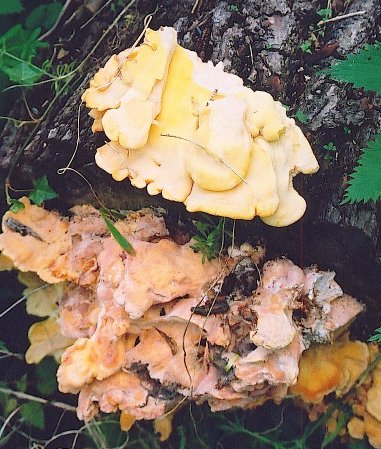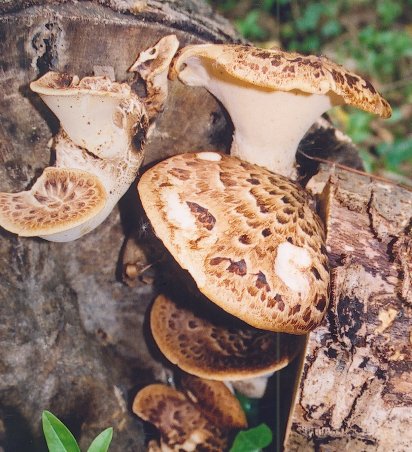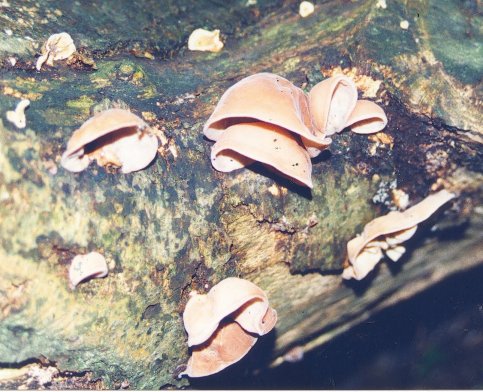|
Laetipiorius sulphureus

Highly prized in Germany and the USA, Chicken of the Woods can be found growing on old trees and stumps from Spring till
Autumn all over the UK. Bright yellow underside, orangy on top, with a distinctly chickeny flavour I find it's best added
to stews and curries. Only pick it when young, unless you have a taste for wood.
When you find this fungus you can have literally kilos of the stuff to get through. It doesn't dry terribly well,
as even specimens that are very young require long cooking to become edible after drying. It's a far better bet to dice it
up and sautee till softened, cool, and freeze in small bags or tubs. Defrost it as you need it, and add it to soups,
stews, etc.
Polyporus squamosus

A more 'typical' polypore than chicken of the woods, the dryads saddle can be found very often in woodlands in the U.K. Primarily
a species found on dead wood, you'll also come across it growing from living trees. It can cause a serious rotting condition
on sycamore and beech trees.
These are good, solid young specimens at their very best. If they're much older than this then leave them be. They're
best eaten fresh, as they don't dry especially well, and good in chicken dishes. You can find this mushroom all year round,
but it's most common in spring and early autumn.
Auricularia auricula-judea

You'll find this fungus (Jews ear) on dead tree stumps and old elm trees whenever there has been rain. Some autumns you'll
find trees with hundreds of these little rubbery 'ears' on them. Often, you can find them ready dried on the side of the tree.
Not the tastiest of fungi, and many people are put off by its disturbingly crunchy 'ear-like- texture. Use that to your
advantage by slicing it thinly and adding it to oriental soups (a common use for a close relative of this fungus in China),
or failing that cook it well and liquidise it in soups and sauces.
|




